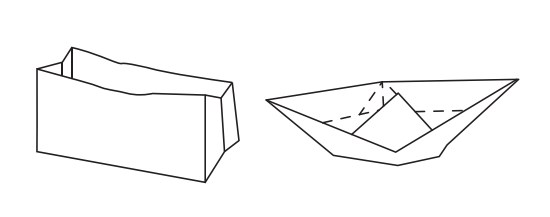Density and buoyancy have an inverse relationship. As an object’s density increases, its buoyancy decreases. And as an object’s density decreases, its buoyancy increases.
A great example of this inverse relationship is ice floating in water. When water freezes, it increases in volume as the water molecules move further apart to accommodate the lattice structure of ice. Because it’s now less dense than water, it floats.
We can use density to explain why ships float even though they are made of steel. A solid piece of steel would sink, but a ship is built in such a way that it encloses large amounts of open space. This means that the overall density of the ship is less than that of water, and it floats.

This activity motivates students to explore the relationship between density and buoyancy by designing a boat.
Challenge students to modify a piece of paper by folding and cutting and adding other materials. The basic design of a paper boat can be something as simple as cutting the top off the paper bag or as complex as folding the bag into an origami boat.
